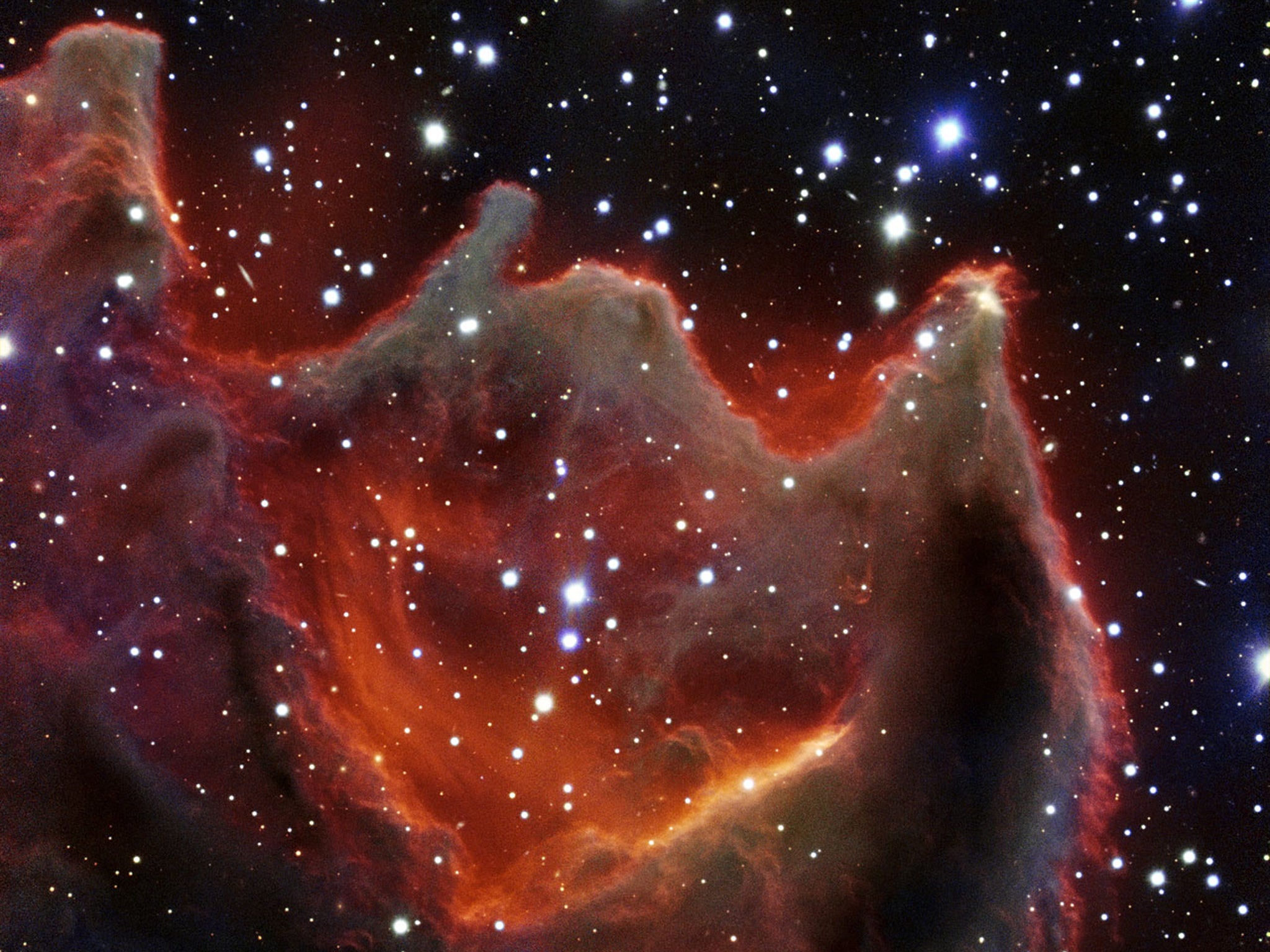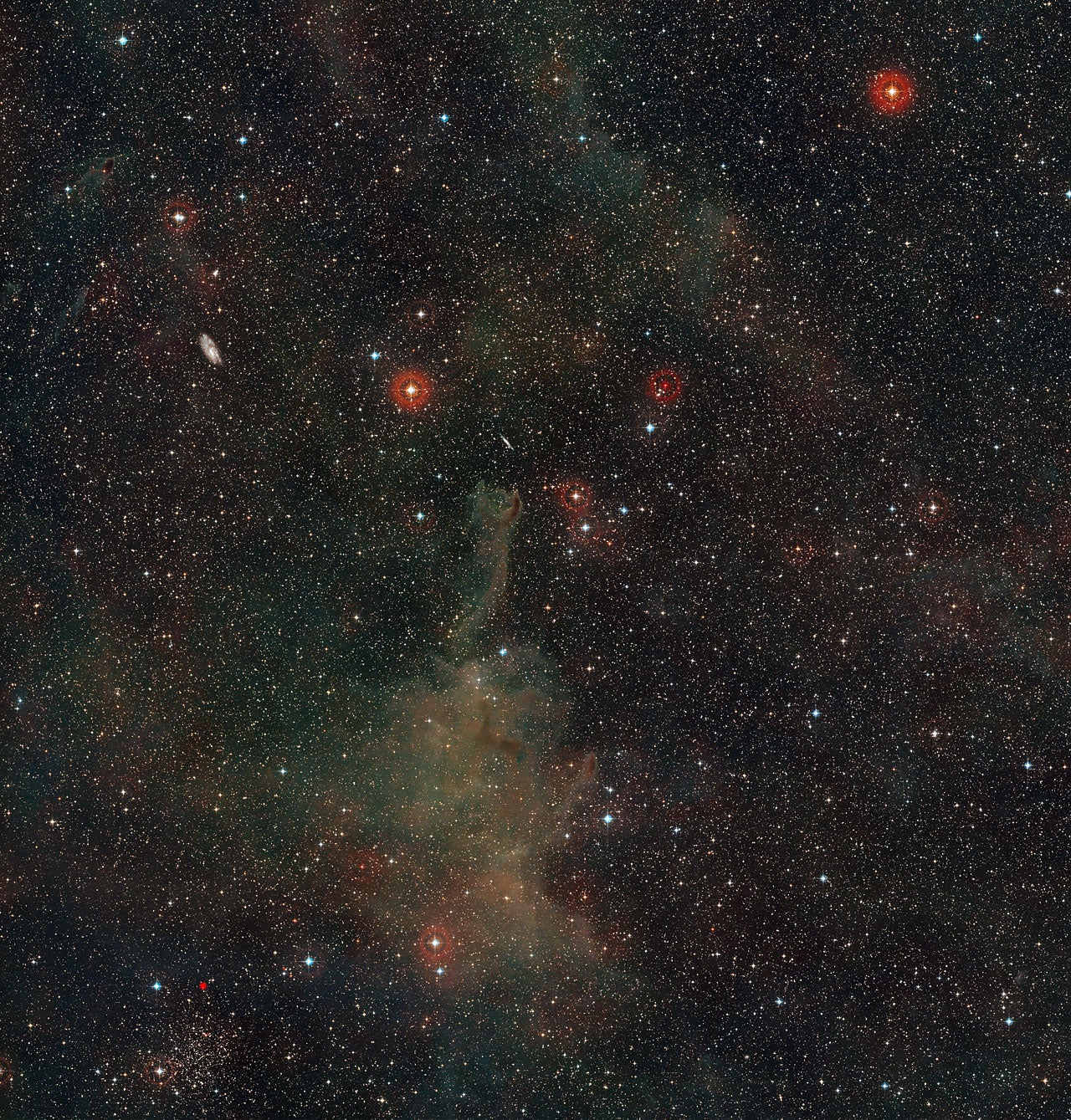Mouth of the Beast: spectacular nebular caught in detail for first time by Very Large Telescope
The stars that make it possible to see the huge nebula are also slowly eroding it

Your support helps us to tell the story
From reproductive rights to climate change to Big Tech, The Independent is on the ground when the story is developing. Whether it's investigating the financials of Elon Musk's pro-Trump PAC or producing our latest documentary, 'The A Word', which shines a light on the American women fighting for reproductive rights, we know how important it is to parse out the facts from the messaging.
At such a critical moment in US history, we need reporters on the ground. Your donation allows us to keep sending journalists to speak to both sides of the story.
The Independent is trusted by Americans across the entire political spectrum. And unlike many other quality news outlets, we choose not to lock Americans out of our reporting and analysis with paywalls. We believe quality journalism should be available to everyone, paid for by those who can afford it.
Your support makes all the difference.A huge cometary globule known as the “mouth of the beast” or “God’s hand” has been pictured in better detail than ever before by the Very Large Telescope.
Despite being called a cometary globule, the nebula doesn’t actually have anything to do with comets. The name comes from when they were first spotted by the UK Schmidt Telescope in Australia, and is based on their appearance.
It is in fact a Bok globule — and despite looking spectacular and bright it is really a dark cloud of space dust and gas where stars can form. They are the smallest dark nebula, only a light-year or two wide, and can contain a mass of up to 100 times our sun.
Because they are dark, they can be hard to see and study. But the European Southern Observatory’s Very Large Telescope has taken a detailed picture of the nebula.

The picture actually shows the head part of the nebula, which is a thick cloud of gas and dust. It can only be seen because it is lit up by the light of nearby stars.
While those stars make it possible to see the nebula, they’re also gradually destroying it. The radiation that comes from them is slowly eroding the particles that scatter the starlight and make it look so bright.
But the exact nature of the nebula remains a mystery. Why CG4 and other cometary globules look the way they do is a matter of debate among astronomers.
Some propose that they became that shape because a supernova exploded nearby. Others argue that stellar winds and radiation shape the huge nebulars and lead to the spectacular formation seen in the photos.
The object is more properly known as CG4 and is about 1300 light-years from Earth in the constellation Puppis, a name that originates from its being the poop deck or stern of a larger constellation that symbolised the ship from Jason and the Argonauts.
The picture was taken as part of a programme run by the ESO called Cosmic Gems, where the organisation uses times where the telescope can’t be used for scientific observations to instead take pictures of spectacular or interesting objects in space.
The ESO is supported by 15 European countries and builds ground-based facilities for looking into space. The Very Large Telescope is based in Paranal in chile, and is the world’s most advanced visible-light observatory.
Join our commenting forum
Join thought-provoking conversations, follow other Independent readers and see their replies
Comments